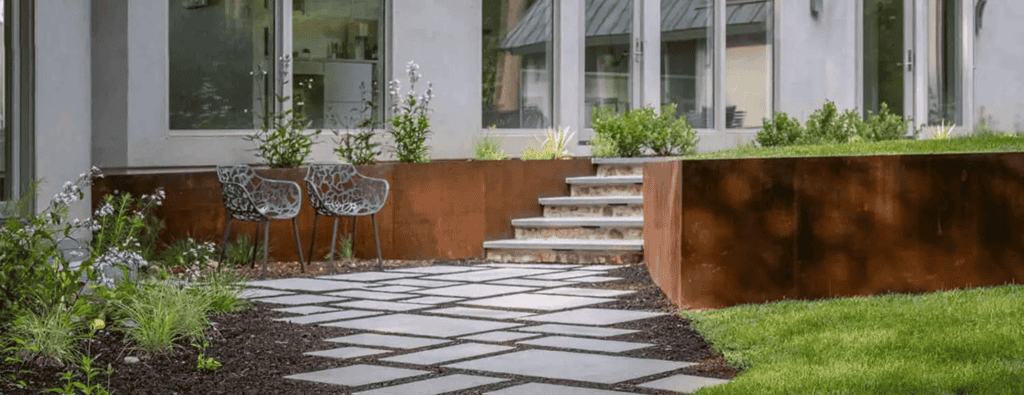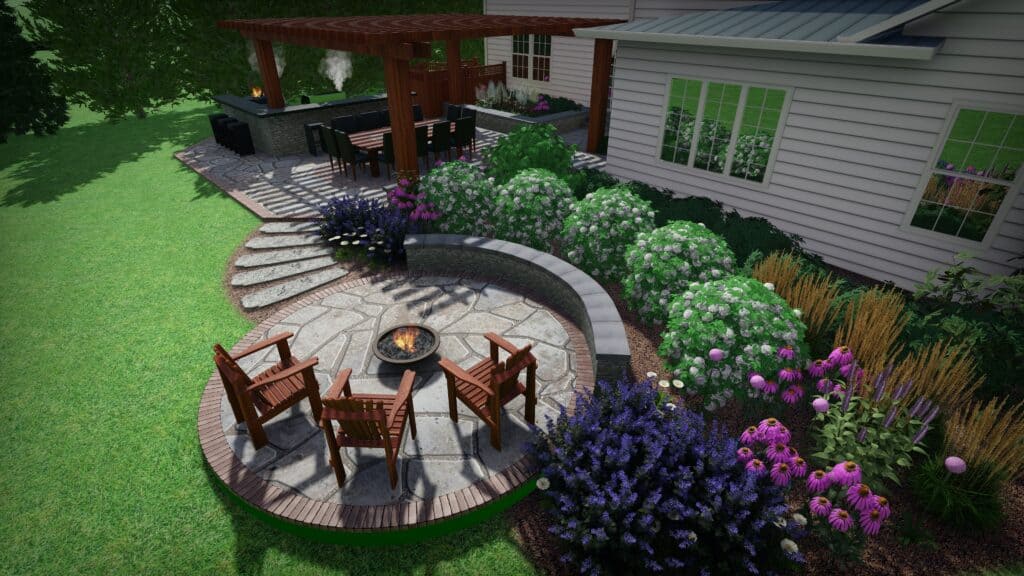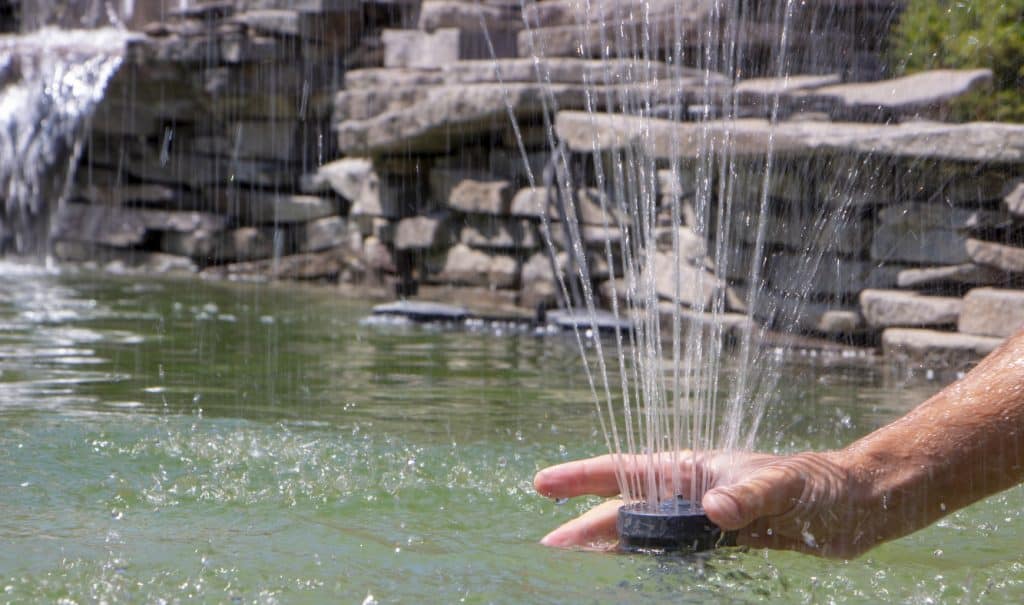Creating an outdoor space that reflects your lifestyle is more than a design challenge—it’s an opportunity to shape your daily routine, boost your home’s value, and turn your yard into a personal sanctuary. If you’re in Springfield, PA, and thinking about investing in your landscape, this guide walks you through how to plan a landscape design that fits your lifestyle, incorporating essential elements like water features, outdoor kitchens, and sustainable landscaping practices.

Why Landscape Design Should Reflect Your Lifestyle
Before diving into plant choices or hardscape materials, it’s essential to start with a question: How do you actually use your outdoor space? Are you someone who loves to entertain? Do you need a play area for kids? A private corner to relax? Or are you looking to create curb appeal for resale value?
Designing your landscape around your daily habits ensures that every corner serves a purpose. This approach not only enhances the functionality of your yard but also increases its long-term value and sustainability.
Step 1: Assess Your Outdoor Living Goals
Take a step back and define what “ideal” looks like to you. Here are some questions to ask yourself:
- Do you host frequent backyard gatherings?
- Are you looking for a quiet retreat?
- Do you need open space for kids or pets?
- Is low-maintenance landscaping a priority?
- Are you passionate about gardening or outdoor cooking?
List your priorities. Your landscape design will grow from this foundation.
Step 2: Understand Your Yard’s Existing Conditions
Even the best ideas fall flat if they’re not compatible with your yard’s natural features. Evaluate:
- Sun and Shade Patterns: Note how light moves across your property. This affects plant choices and sitting areas.
- Drainage and Soil Quality: Poor drainage can undermine patios and damage plant roots.
- Topography: Slopes and elevation changes can be challenges—or opportunities—for creative landscape solutions.
- Wind Exposure: A windy yard might require screening or wind-resistant plants.
By working with your yard’s natural conditions, you’ll save on long-term maintenance and create a more durable landscape.

Step 3: Design Zones Around Function and Flow
A well-planned landscape often includes distinct zones that serve specific purposes. These might include:
- Dining and Entertainment Areas: Outdoor kitchens, patios, and fire pits.
- Relaxation Retreats: Hammocks, pergolas, shaded seating with views.
- Kids’ Play Spaces: Safe, visible, and interactive areas.
- Gardening Zones: Raised beds, herb gardens, or butterfly gardens.
- Practical Use Areas: Compost bins, tool sheds, or utility spaces.
Carefully consider how people will move from one area to another. Use paths, stepping stones, or changes in material to guide traffic while preserving open green space.
Step 4: Incorporate Water Features for Serenity and Style
Adding a water feature doesn’t just elevate the aesthetic—it transforms your yard into a tranquil oasis. Options include:
1. Garden Fountains
Perfect for compact yards or entryways, a freestanding fountain adds visual and auditory appeal without requiring a pond.
2. Pondless Waterfalls
These are a great choice for families with kids or pets. You get the sound and movement of water without the safety concerns of an open pond.
3. Reflecting Pools
Ideal for formal or minimalist designs, a sleek reflecting pool can anchor a modern outdoor living space.
4. Natural Ponds with Ecosystems
Great for larger properties and homeowners who love wildlife. Include aquatic plants and perhaps a few koi for a balanced, eco-friendly system.
Pro Tip: In Springfield, PA, where winters can freeze small systems, make sure to include winterization features or seasonal shut-off valves.

Step 5: Build the Perfect Outdoor Kitchen for Entertaining
Outdoor kitchens have moved beyond just grills and picnic tables. Today’s designs rival their indoor counterparts with:
- Built-in Grills and Smokers
- Pizza Ovens
- Refrigerators and Beverage Stations
- Ample Counter Space
- Weatherproof Cabinets
- Overhead Pergolas or Shade Structures
Think about your cooking habits. Do you want a full-service setup, or just the basics? And how many guests do you typically entertain?
Design tip: Position your kitchen near the house for easier utility hookups and quicker access during winter months.
Step 6: Embrace Sustainable Landscaping Practices
Sustainability isn’t just a buzzword—it’s a smart way to reduce maintenance and increase the longevity of your yard. Here are a few strategies:
1. Native and Climate-Resilient Plants
Choose plants that naturally thrive in the Mid-Atlantic region. They’ll need less water, fertilizer, and care.
2. Permeable Pavers and Eco-Friendly Hardscapes
These reduce runoff and allow rainwater to recharge the groundwater supply.
3. Rain Gardens
These shallow basins collect water from downspouts and driveways, filtering it through soil and native vegetation.
4. Smart Irrigation
Use drip irrigation systems and weather-sensor sprinklers to reduce water waste.
5. Mulching and Composting
Organic mulch conserves water, suppresses weeds, and breaks down into healthy soil. Composting cuts down on waste and enriches your garden beds naturally.
Step 7: Choose the Right Materials and Finishes
Material choices should complement your home’s architecture while supporting your lifestyle goals.
- Natural stone patios offer timeless elegance.
- Brick walkways create a traditional aesthetic.
- Gravel or decomposed granite gives a rustic, budget-friendly option.
- Composite decking provides durability with less maintenance.
For retaining walls or raised beds, consider using stone veneer or block systems that match your outdoor kitchen finishes for cohesion.
Step 8: Create Year-Round Interest
In Springfield, PA, you’ll experience four full seasons—so your landscape should shine in each one.
- Spring: Bulbs, flowering trees, and early perennials.
- Summer: Lush lawns, flowering shrubs, and shade trees.
- Fall: Ornamental grasses, bold foliage colors, and late bloomers like sedum or mums.
- Winter: Evergreen shrubs, red twig dogwoods, and hardscape focal points like fire pits or statues.
Lighting plays a critical role, too. Well-placed path lights, uplighting on trees, and spotlights on water features make your space usable after dark.
Step 9: Don’t Forget Privacy and Shelter
Even the most stunning landscape design can fall flat without a sense of enclosure or privacy. Consider:
- Tall hedges or ornamental grasses to create screens.
- Lattice walls with climbing vines.
- Pergolas and gazebos for overhead coverage.
- Outdoor curtains for flexible enclosures.
If you’re near a busy street or close neighbors, these additions turn your yard into a true escape.
Step 10: Work with a Professional Who Understands Your Vision
While DIY projects can be rewarding, a landscape professional can help bring your ideas to life while avoiding common pitfalls. A design-build team will:
- Understand zoning regulations and HOA requirements in Springfield, PA.
- Select materials suited for local weather.
- Optimize drainage and grading.
- Ensure utility placement for outdoor kitchens and lighting is safe and code-compliant.
Your Landscape, Your Lifestyle — Designed for You
Planning a landscape design that fits your lifestyle means balancing beauty with functionality, integrating smart features like water elements and sustainable materials, and working with the space you already have. The result is a personalized outdoor space that enhances how you live—whether you’re entertaining guests, relaxing after a long day, or enjoying family time in the fresh air.
Call Kelly Masonry to Bring Your Outdoor Vision to Life
If you’re ready to transform your yard into a stunning, functional extension of your home, Kelly Masonry is here to help. From custom water features and outdoor kitchens to sustainable landscape design tailored to your lifestyle, our team serves homeowners throughout Springfield, PA with precision, creativity, and lasting craftsmanship.
Contact Kelly Masonry today to start planning a landscape design that fits your lifestyle.
